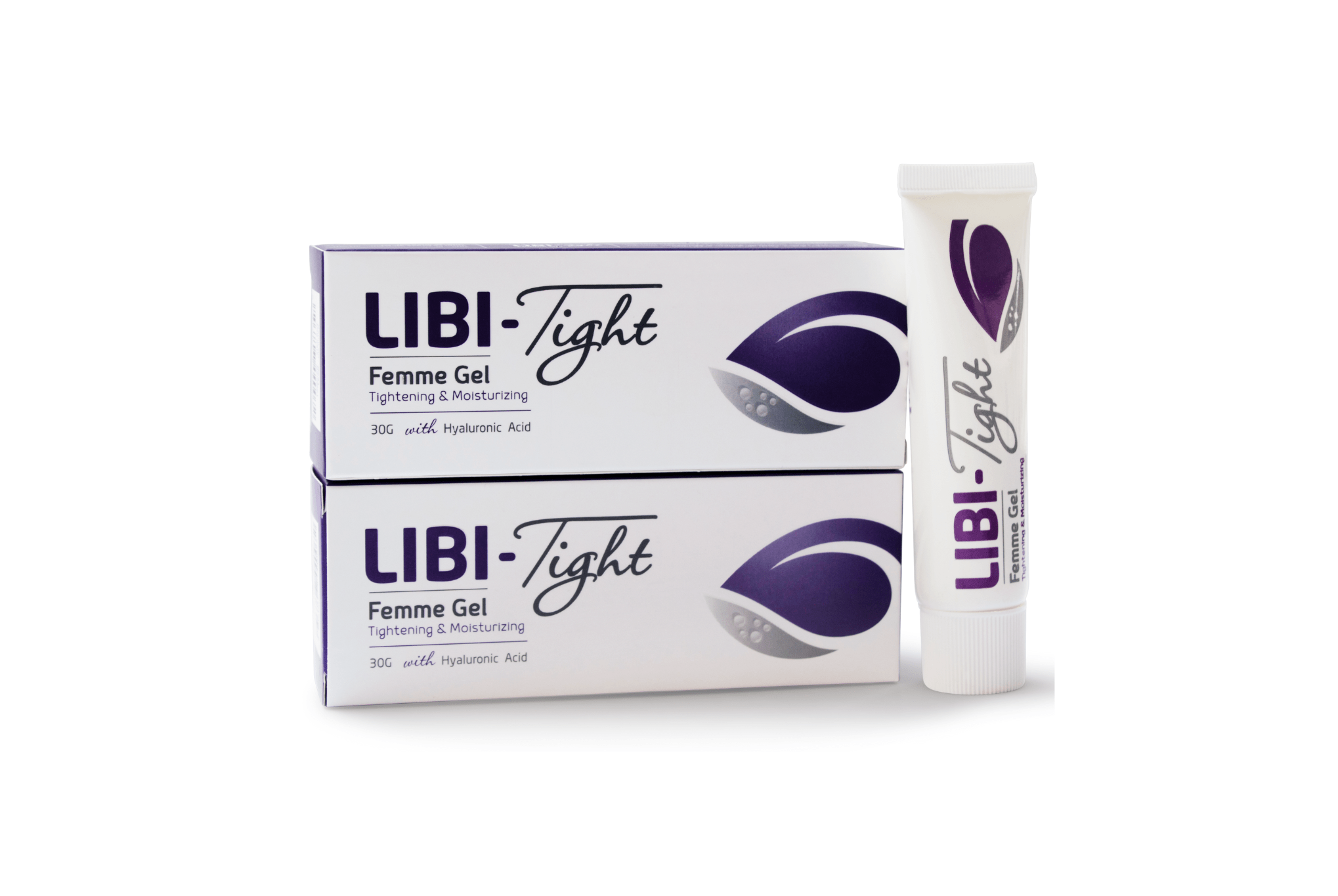Vaginal Gel for Moisturizing & Restoration. Reduces Vaginal Dryness & Itching. Restores Structure & Elasticity of Vaginal Tissues and Provides Firming and Tightening effect.
Benefits of LibiTight Femme Gel
Deep Moisturization
LibiTight gel helps with Itching, Dryness, and Painful Experiences
- Hyaluronic acid helps hydrate the tissues, has long-term soothing and moisturizing effects, and prevents dryness and itching.
- Allantoin also helps relieve itching, burning, and discharge.
- Chamomile extract helps improve satisfaction for women.
Tissue Restoration
LibiTight gel helps restore the structure of the mucosa
- Hyaluronic Acid helps restore the elasticity of the tissues and facilitates the process of tissue regeneration.
Improved experience for women
- Hyaluronic Acid helps increase arousal.
- Arginine helps increase blood supply in the woman’s sensitive area tissues, allowing them to be more sensitive to stimulation and improving women’s desire.
- Arginine also increases a woman’s staying power.
Firming & Tightening
- Potassium Alum helps tighten the walls of the woman’s sensitive area.
- Allantoin is an astringent ingredient that helps strengthen and tighten the tissues.
Powerful Ingredients
Hyaluronic Acid
Hyaluronic Acid is naturally present in our bodies and plays a vital role in the hydration and elasticity of the tissues. It helps form an extracellular water film that moisturizes the skin, which helps keep the water levels balanced and the skin’s elasticity. It also facilitates tissue regeneration.
Arginine
Arginine is an antioxidant that protects the skin from free radicals, increases the skin’s hydration levels, and supports antiaging and collagen production.
Allantoin
Allantoin is a natural extract from the comfrey plant. It is an astringent ingredient that helps strengthen and tighten the tissues and relieves itching, burning, and discharge.
Chamomile Extract
Using chamomile extract helps mitigate painful experiences and increases satisfaction.
Potassium Alum
Alum has blood-coagulant properties and soothes the skin. It also acts as a natural astringent, helping to firm and tighten.
Alum is 100% natural and offers quick results. Women also use it to relieve menstrual problems.
LibiTight Femme Gel FAQs
For a complete list of FAQs about LibiTght Femme Gel, check out the LibiTight Gel FAQs Page.
LibiTight Femme Gel Availability
LibiTight Gel is available in Jordan, Kuwait, Yemen, Libya, UAE, and, soon, other countries.
It can also be ordered online and shipped immediately to countries where it is not available.
We are also seeking Exclusive Distributors for LibiTight Femme Gel in several markets. If you are interested, please contact us for details.
Order LibiTight Online
-
Product on sale
 LibiTight Femme GelOriginal price was: $ 30.95.$ 24.95Current price is: $ 24.95.
LibiTight Femme GelOriginal price was: $ 30.95.$ 24.95Current price is: $ 24.95.


